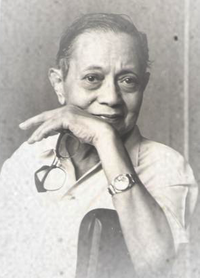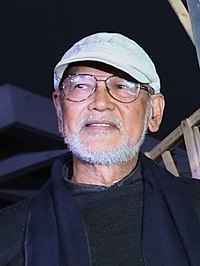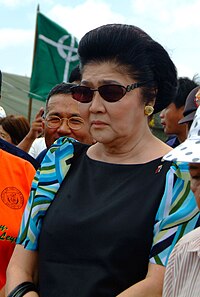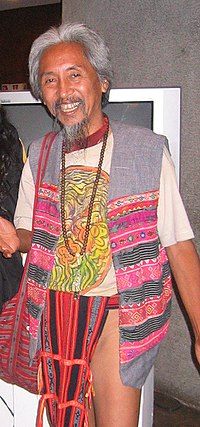-
Use Cases
-
Resources
-
Pricing
History Of Philippine Art Timeline
(Precolonial to Present)Spanish Colonial Period
Juan Luna's "Spoliarium" Unveiled
1884
% complete
Juan Luna's "Spoliarium," unveiled in 1884, is one of the most iconic artworks in Philippine art history. This massive painting depicts the aftermath of gladiatorial combat during the Roman Empire, symbolizing the oppression and suffering endured by the Filipino people under Spanish colonial rule.
Image source: Juan Luna

Botong Francisco's "The Progress of Medicine in the Philippines"
1953
% complete
Carlos "Botong" Francisco, a prominent Filipino muralist, completed "The Progress of Medicine in the Philippines" in 1953. This mural, located at the Philippine General Hospital, depicts the evolution of medical practices and the contributions of Filipino healers throughout history.
Image source: Botong Francisco

American Colonial Period
The Thirteen Moderns Exhibition
1938
% complete
The Thirteen Moderns Exhibition, held in 1938, marked a significant turning point in Philippine art history. This exhibition showcased the works of thirteen Filipino artists who embraced modernist principles, challenging traditional artistic norms and paving the way for contemporary art in the Philippines.
Image source: Victorio Edades

Fernando Amorsolo's "The Burning of Manila"
1945
% complete
Fernando Amorsolo, one of the Philippines' most renowned artists, painted "The Burning of Manila" in 1945. This powerful artwork depicts the destruction of Manila during World War II, capturing the devastation and resilience of the Filipino people.
Image source: Fernando Amorsolo

H.R. Ocampo's "Genesis"
1950
% complete
H.R. Ocampo, a prominent modernist painter, created "Genesis" in 1950. This vibrant and abstract artwork reflects Ocampo's exploration of form, color, and movement, showcasing his significant contributions to Philippine modern art.
Contemporary Art
Art Association of the Philippines Founded
1948
% complete
The Art Association of the Philippines was founded in 1948, becoming a vital organization in promoting and supporting contemporary Philippine art. It has played a significant role in fostering artistic development, organizing exhibitions, and providing platforms for artists to showcase their works.
Vicente Manansala's "Jeepneys"
1950
% complete
Vicente Manansala, a pioneer of Philippine modernism, painted "Jeepneys" in 1950. This iconic artwork captures the vibrant and colorful jeepneys, a popular mode of transportation in the Philippines, showcasing Manansala's unique style and portrayal of everyday Filipino life.
Image source: Vicente Manansala

BenCab's "Sabel" Series
1965
% complete
Benedicto Cabrera, known as BenCab, began his iconic "Sabel" series in 1965. These paintings depict a stylized representation of a marginalized woman, symbolizing the struggles and resilience of the Filipino people. BenCab's "Sabel" series has become an important symbol of Philippine contemporary art.
Image source: Benedicto Cabrera

Imelda Marcos and the Cultural Center of the Philippines
1969
% complete
Imelda Marcos, the former First Lady of the Philippines, played a significant role in the establishment of the Cultural Center of the Philippines (CCP) in 1969. The CCP became a hub for various artistic disciplines, hosting performances, exhibitions, and fostering the development of Philippine arts and culture.
Image source: Imelda Marcos

Social Realism Movement Emerges
1970 - 1979
% complete
The 1970s saw the emergence of the Social Realism movement in Philippine art, characterized by artworks that reflect social issues, political commentary, and the struggles of the Filipino people. Artists like Nunelucio Alvarado, Antipas Delotavo, and Pablo Baen Santos played significant roles in this movement.
Image source: Social realism

National Artist Awards Established
1972
% complete
The National Artist Awards were established in 1972 to recognize individuals who have made significant contributions to the development and enrichment of Philippine arts and culture. This prestigious award honors artists across various disciplines, including visual arts, literature, music, and more.
Image source: National Artist of the Philippines

Kidlat Tahimik's "Perfumed Nightmare"
1977
% complete
Kidlat Tahimik's "Perfumed Nightmare," released in 1977, is a critically acclaimed independent film that explores themes of colonialism, identity, and the Filipino experience. This groundbreaking film marked a significant milestone in Philippine cinema and garnered international recognition.
Image source: Kidlat Tahimik

Art Fair Philippines Inaugural Edition
2013
% complete
The inaugural edition of Art Fair Philippines took place in 2013, becoming a prominent platform for showcasing contemporary Philippine art. This annual event brings together local and international artists, galleries, collectors, and art enthusiasts, contributing to the growth and appreciation of Philippine art.
Image source: Zean Cabangis

Pre-colonial Art
Angono Petroglyphs Discovered
1965
% complete
The Angono Petroglyphs, discovered in 1965 in Rizal, Philippines, are ancient rock engravings that date back thousands of years. These prehistoric carvings depict various animals, human figures, and symbols, providing valuable insights into the artistic expressions of the early inhabitants of the Philippines.
Image source: Angono Petroglyphs

Key Facts
- Precolonial art in the Philippines includes pottery, goldsmithing, and weaving.
- The Spanish colonial period introduced Christianity and European art influences.
- Juan Luna and Felix Resurreccion Hidalgo, Filipino artists, gained international recognition in the late 19th century.
- The American colonial period brought modernism and the establishment of art schools in the Philippines.
- Contemporary Philippine art is characterized by experimentation and a reflection of social, political, and cultural issues.
Source
This History Of Philippine Art timeline was generated with the help of AI using information found on the internet.
We strive to make these timelines as accurate as possible, but occasionally inaccurates slip in. If you notice anything amiss, let us know at [email protected] and we'll correct it for future visitors.
Create a timeline like this one for free
Preceden lets you create stunning timelines using AI or manually.
Customize your timeline with one of our low-cost paid plans
Export your timeline, add your own events, edit or remove AI-generated events, and much more
Free
$
0
free forever
No credit card required.
Basic
$
10
/month
billed annually
Cancel anytime.
Pro
$
16
/month
billed annually
Cancel anytime.
Common Questions
Can I cancel anytime?
Yes. You can cancel your subscription from your account page at anytime which will ensure you are not charged again. If you cancel you can still access your subscription for the full time period you paid for.
Will you send an annual renewal reminder?
Yes, we will email you a reminder prior to the annual renewal and will also email you a receipt.
Do you offer refunds?
Yes. You can email us within 15 days of any payment and we will issue you a full refund.
What if I have more questions?
Check out our pricing docs or send us an email anytime: [email protected].